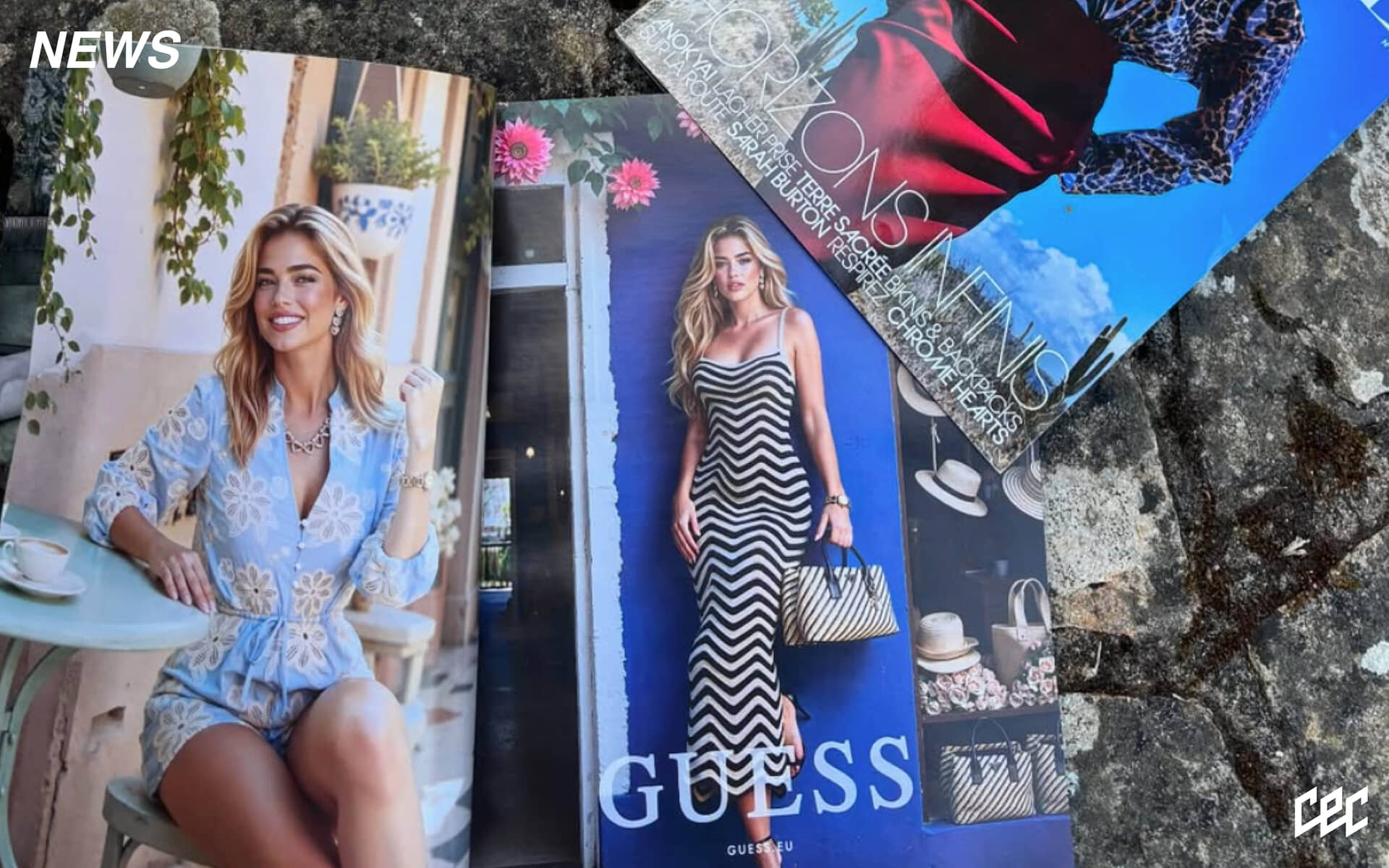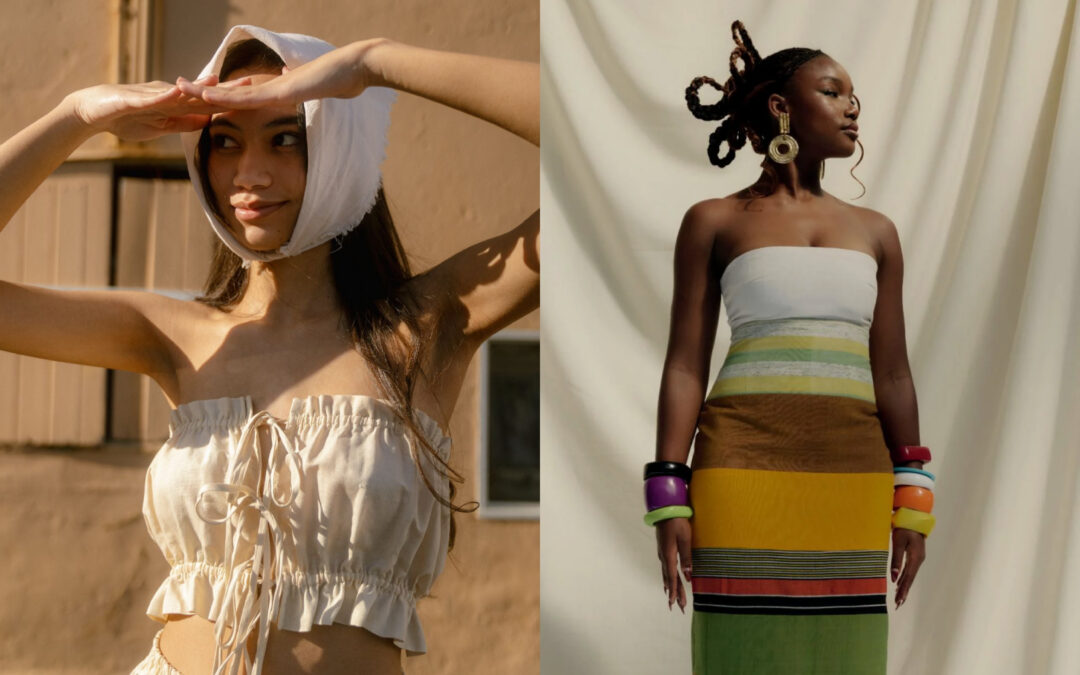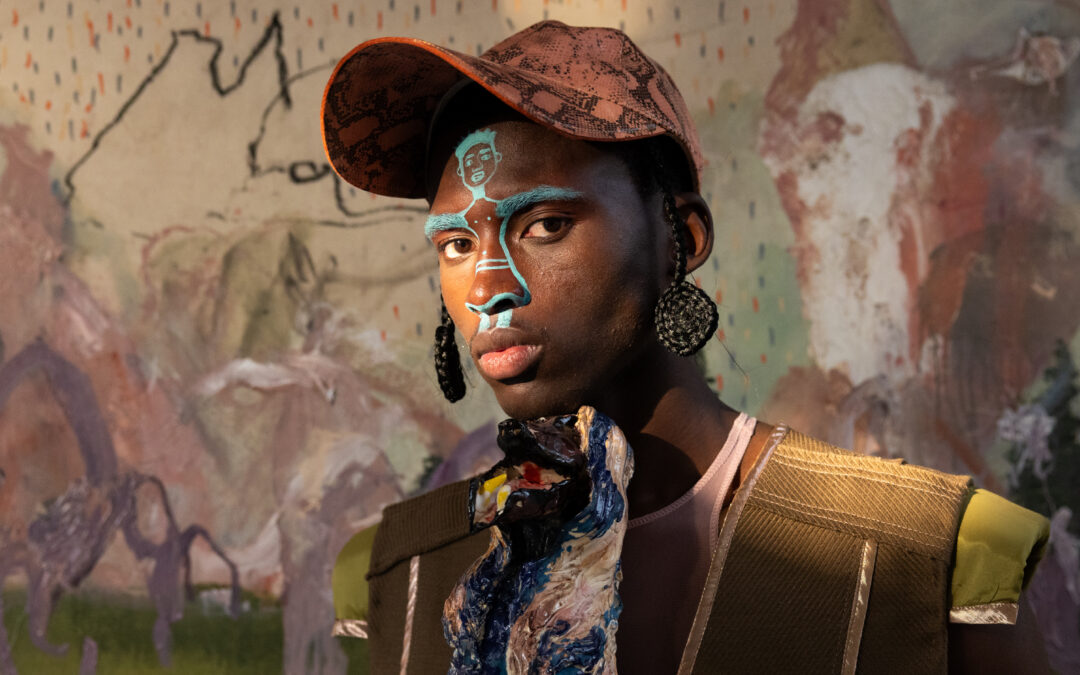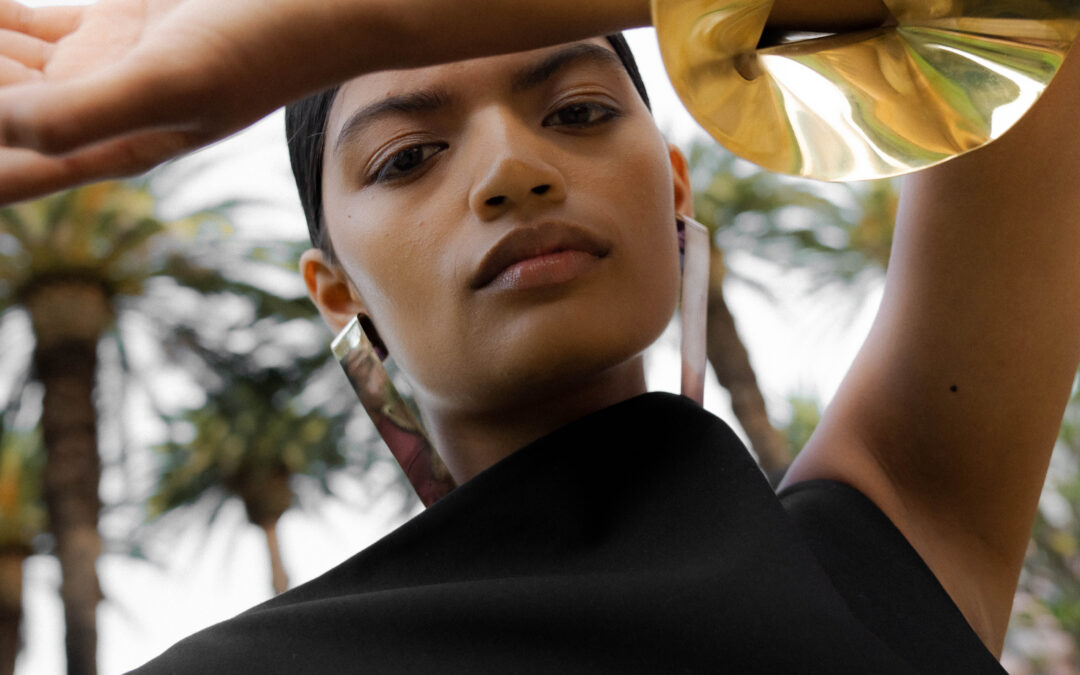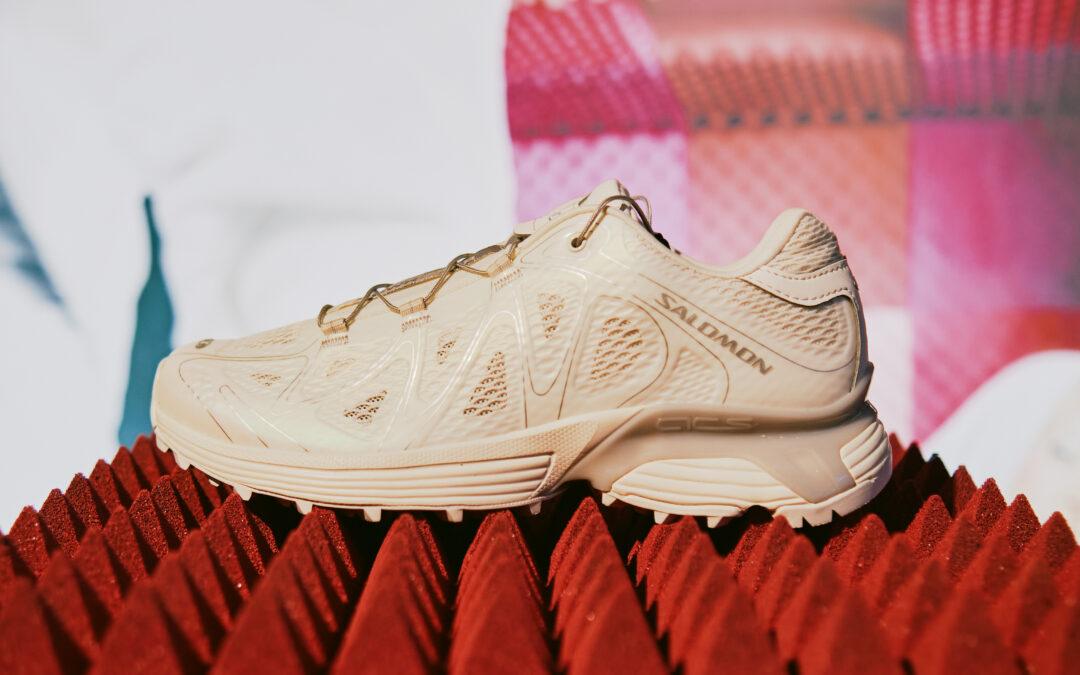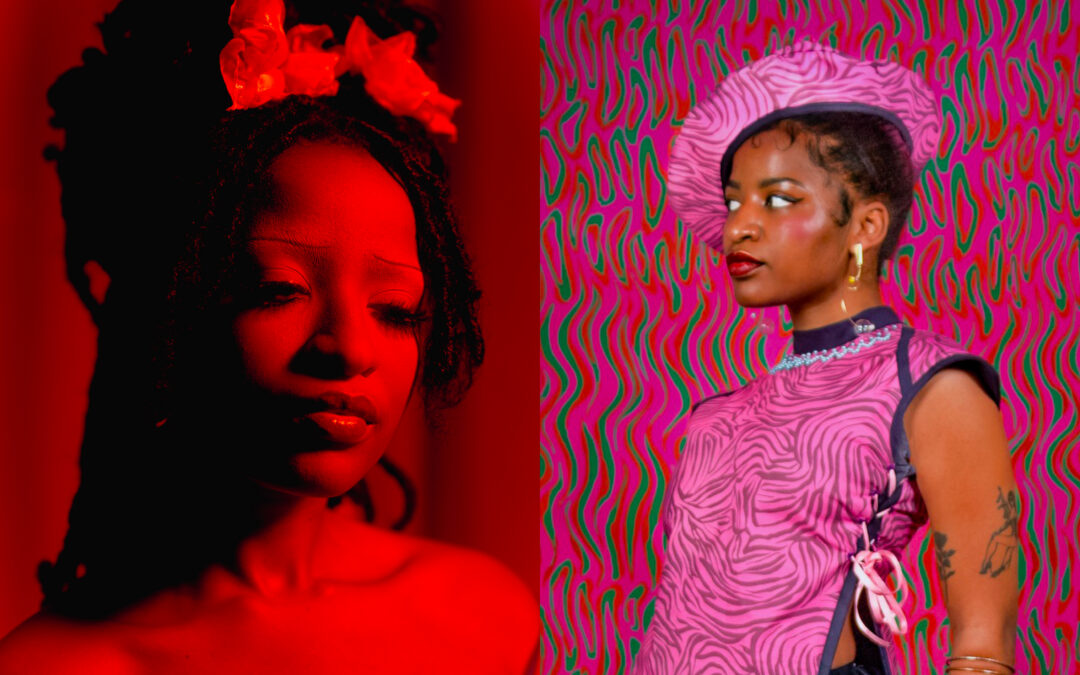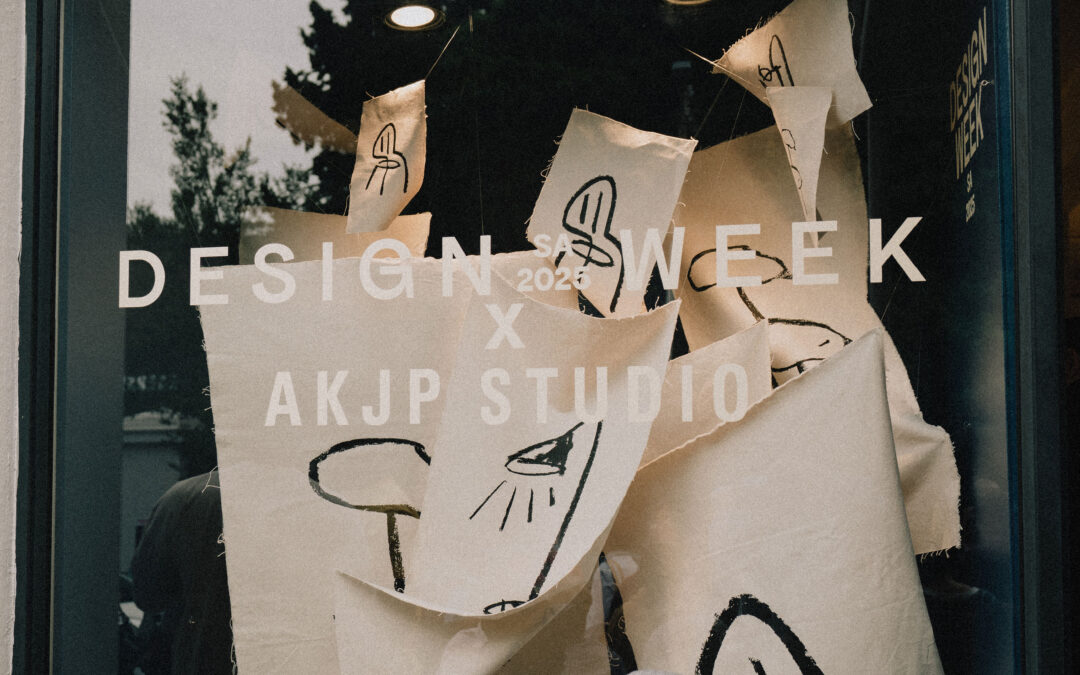In the August print edition of Vogue, a seemingly ordinary Guess two-page spread appeared; a radiant blonde model in a striped maxi dress, poised in the archetypal sun-drenched style that the brand has made iconic, on the opposite page; she sits smiling, perched on a chair in a sundress. Upon closer look at her overly smoothed, cartoonish appearance, something eerie was revealed (and noted in very tiny fine-print on the page); this model was generated by AI.
A strange simulacra of a human, created by Seraphinne Vallora, a company led by Valentina Gonzalez and Andreea Petrescu, was one of ten models developed for Guess co-founder Paul Marciano. He selected a blonde and a brunette — both flawless — for the campaign. In subsequent interviews, the creators described their work “as complex and highly skilled, with costs reaching into the low six figures for clients like Guess.” Despite this, the technology, they say, isn’t yet capable of representing plus-size bodies, a fact that alone speaks volumes.
While Vogue insists this wasn’t an editorial decision, its placement in the magazine makes it the first time an AI-generated model has appeared in its pages; a symbolic moment, and a departure from the fashion giant’s seemingly neutral tone on this discourse within the industry. Obfuscating its responsibility despite the backlash, the magazine surely understands that featuring this advert is its own kind of sign-off on AI’s creep into fashion editorial and campaigns processes? This so-called ‘futuristic experiment’ is, in truth, a familiar one: the ad ultimately showed the same homogenised, Eurocentric beauty standard; thin, white, blonde, flawless; just digitised, and again; eerily cartoonish.
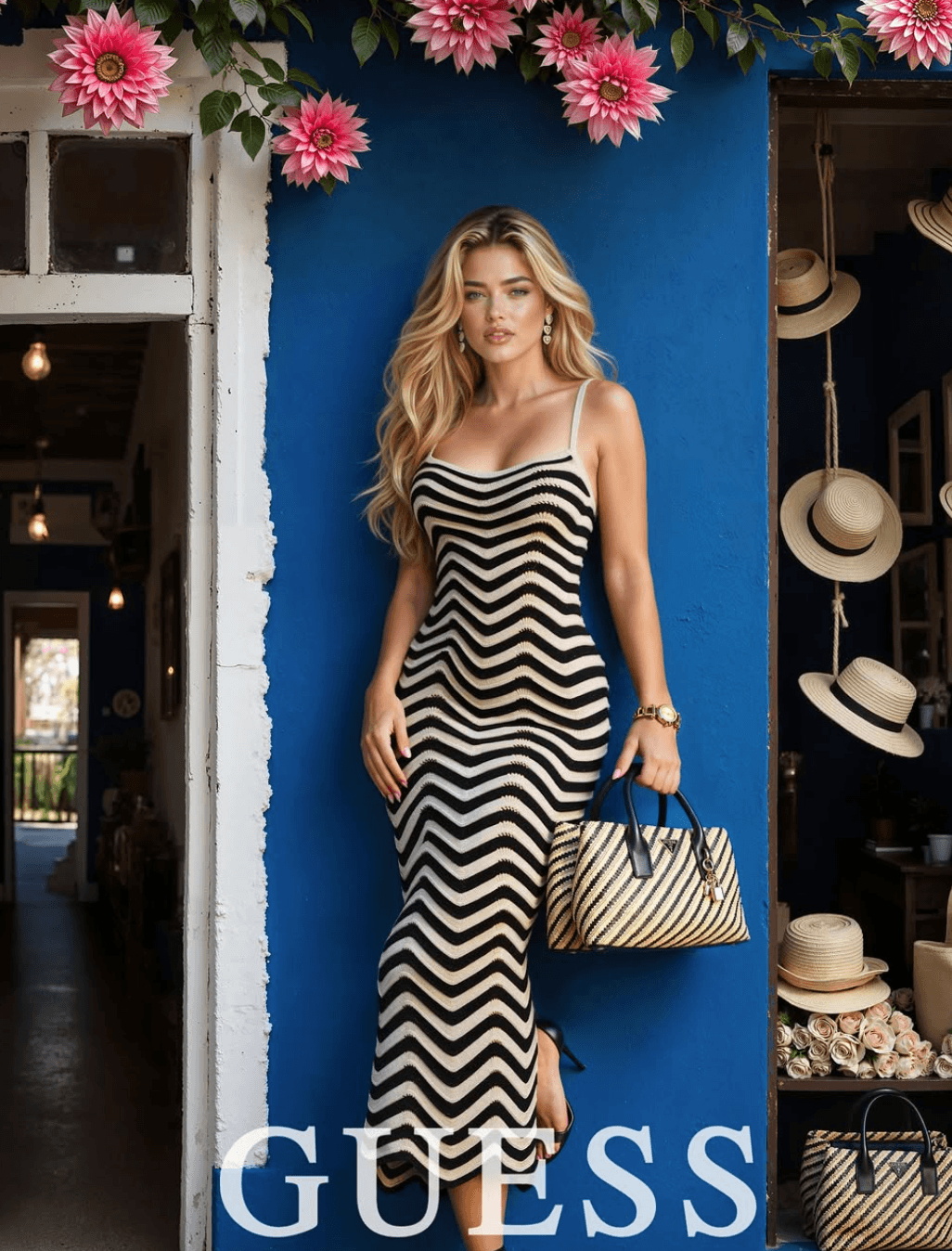
Guess AI Model by Seraphinne Vallora, via @seraphinnevallora IG
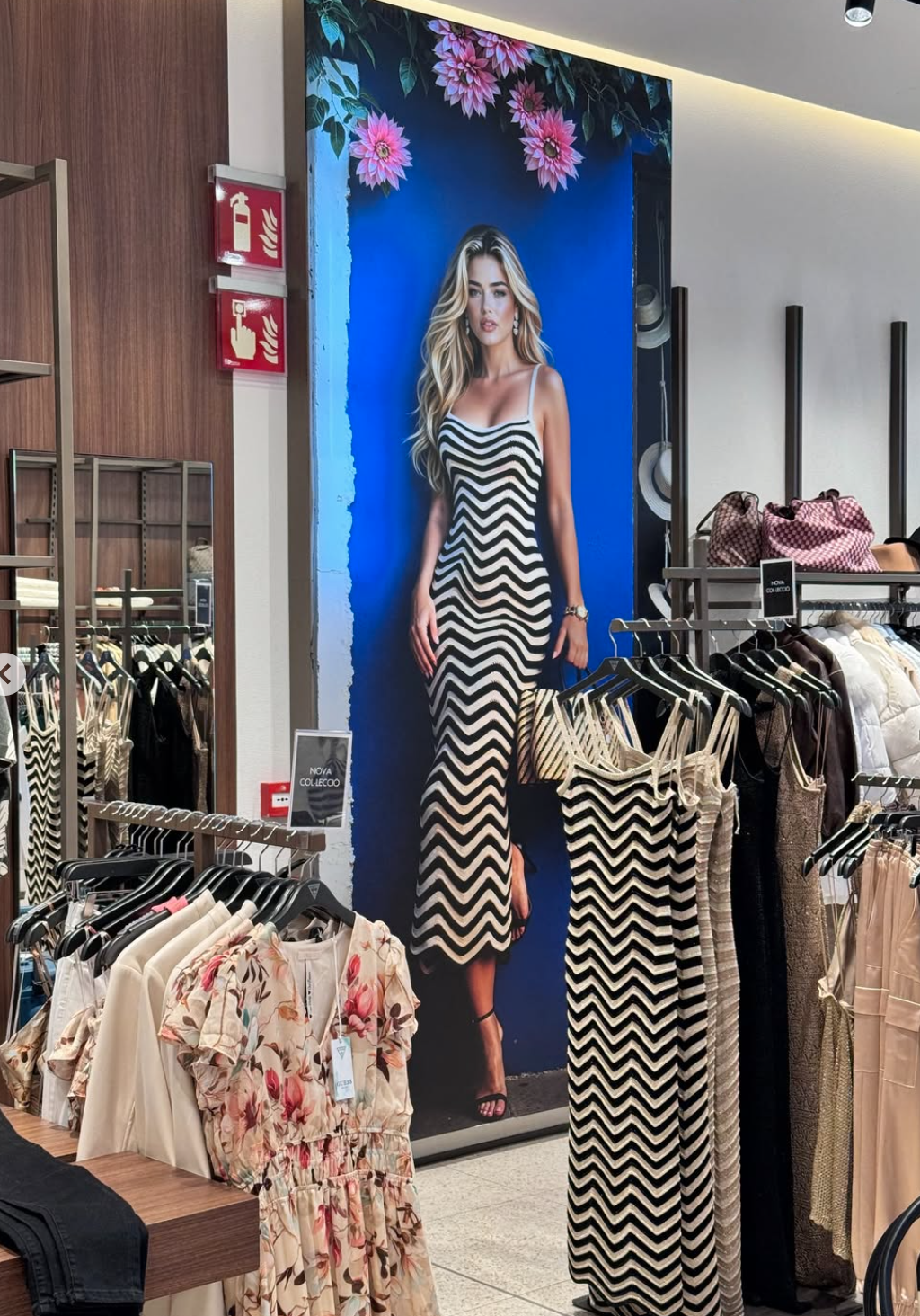
Guess AI Model by Seraphinne Vallora, via @seraphinnevallora IG
This campaign lands in a moment of cultural reckoning around beauty and representation. Real-life models and activists have spent decades pushing for more diverse, inclusive, and authentic portrayals of the human body in fashion. The use of AI to resurrect an old-school Guess aesthetic — famously associated with blonde bombshells of the ’90s — bypasses the progress that so many have fought for, and it’s a reassertion of control by those with the power to shape and sell fantasy, without bearing any of the accountability for its real-world effects.
The implications are dire; AI-generated models or creative workers don’t require contracts, meal breaks, health insurance, they don’t hold opinions; they don’t age, and they certainly don’t ask for inclusion. In their eerie perfection, AI models represent a bizarre nostalgia for outdated beauty ideals, and a preference for automation over humanity that corporations always seem to lean toward, even in industries that depend on creativity and individuality.
So, our questions mount: are we witnessing the signal of mass migration of creative labour — from photographers, models, stylists, editors — to tech workers and code? What happens to fashion’s tactile, emotional, embodied essence when it’s filtered through code and machine learning? What does it mean for young people already struggling with self-image, to be shown, yet again, that even the ideal isn’t real?
We want to be clear; AI is here. It is changing industries, streamlining processes, and offering new ways of working, and to resist it entirely may be naive. Yet, without the ethical considerations and the fact that policy has not caught up with the fast-paced evolution of AI, we can see how easily this tool is used to reinforce regressive standards under the guise of innovation, alongside the devastating notion that this campaign would have robbed jobs from many, many people.
What we’re seeing with Guess and Vogue is the most overt moment in fashion this year that we can think of as to how those in power structures dominate our cultural landscape with one swift move, and the consequences of brands violating the contract of ethics between them and their audiences.
The fashion world has always dealt in fantasy, but at what cost to reality now?
For more news, visit the Connect Everything Collective homepage www.ceconline.co.za

